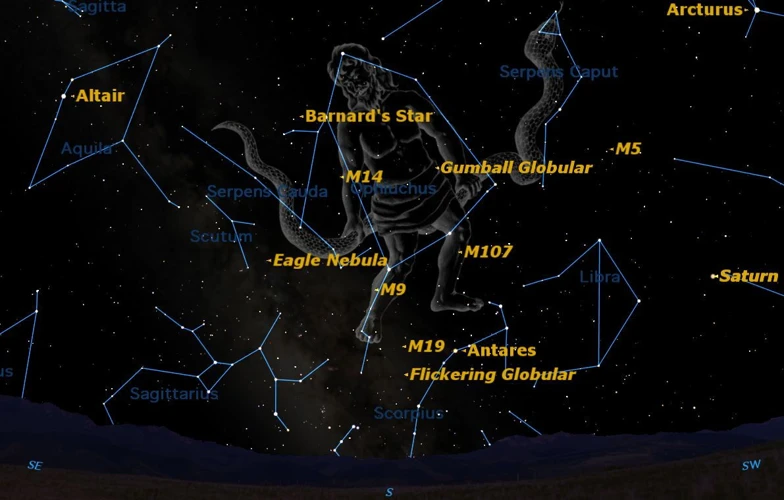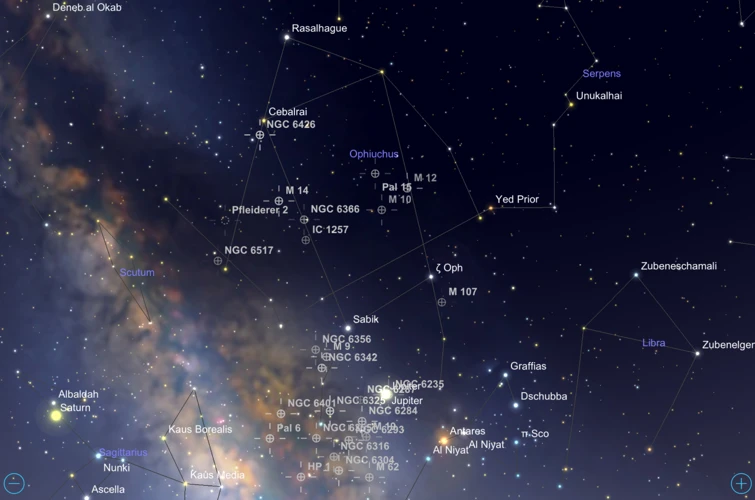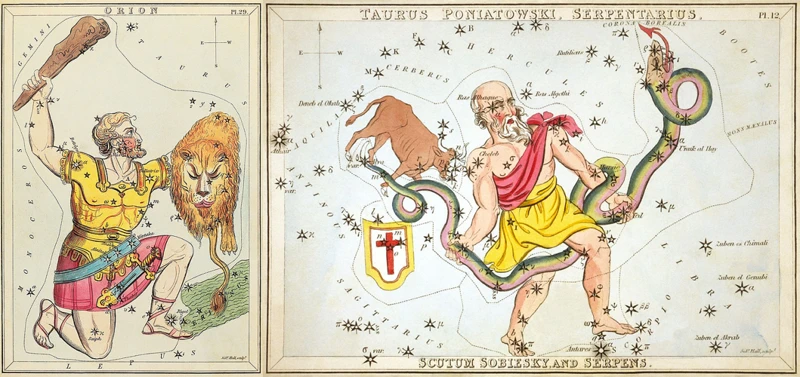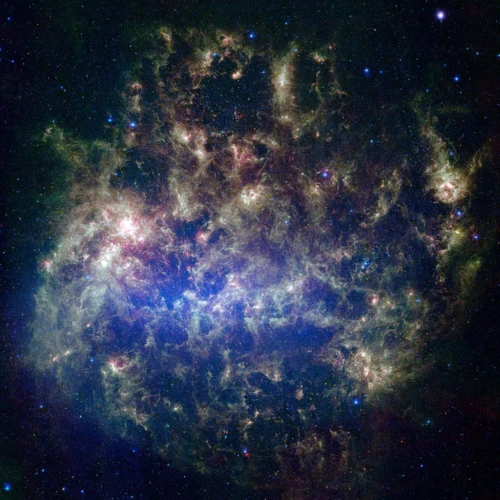Welcome to the mysterious world of Southern Hemisphere constellations and their fascinating legends! In this article, we explore the celestial wonders that grace the skies of the Southern Hemisphere, unveiling the captivating tales that have been passed down through generations. These constellations not only serve as navigational guides but also hold immense cultural and mythological significance. From the majestic Great Emu to the iconic Southern Cross, each constellation tells a unique story that connects us to ancient civilizations and their rich heritage. So, let’s embark on a celestial journey and unravel the secrets of the southern skies!
Contents
- The Southern Skies
- The Great Emu
- The Southern Cross
- Orion’s Belt
- The Magellanic Clouds
- Conclusion
-
Frequently Asked Questions
- How many constellations are there in the Southern Hemisphere?
- Can I see the Southern Cross from the Northern Hemisphere?
- Are constellations the same in both hemispheres?
- What is the significance of the Great Emu constellation?
- Is Orion’s Belt visible in the Southern Hemisphere?
- Do the Magellanic Clouds have any mythological connections?
- Can I use the Southern Cross for navigation?
- Are there any famous constellations in the Southern Hemisphere based on animals?
- What are the Magellanic Clouds?
- Can I see the same constellations from different countries in the Southern Hemisphere?
- References
-
Frequently Asked Questions
- 1. Why are constellations important in Southern Hemisphere cultures?
- 2. Can I see the Great Emu constellation from anywhere in the Southern Hemisphere?
- 3. What is the legend behind the Great Emu in the Sky?
- 4. How did Indigenous Australian culture influence the interpretation of the Great Emu constellation?
- 5. Is the Southern Cross constellation visible all year round?
- 6. What is the cultural significance of the Southern Cross constellation?
- 7. How are Orion’s Belt and its mythology connected to the Southern Hemisphere?
- 8. What makes the Magellanic Clouds objects of astronomical marvel?
- 9. Are there any mythological connections associated with the Magellanic Clouds?
- 10. Why do constellations have different interpretations in the Northern and Southern Hemispheres?
- References
- Read More
The Southern Skies

The Southern Skies hold a mesmerizing array of constellations that have captivated the human imagination for centuries. These celestial wonders, unique to the Southern Hemisphere, offer a different perspective on the night sky. From the majestic Great Emu, inspired by Indigenous Australian wisdom, to the iconic Southern Cross, a symbol of navigation and cultural significance, the Southern Skies are a sight to behold. Observing the stars in the Southern Hemisphere offers a fresh and awe-inspiring experience, allowing us to connect with ancient civilizations and their wisdom. So, venture into the depths of the Southern Skies and discover the hidden secrets they hold.
The Importance of Constellations
Constellations hold immense importance in various aspects of human life and culture. Below are some key reasons why constellations are significant:
1. Navigational Guides: Throughout history, constellations served as reliable navigational tools for ancient civilizations. By observing the positions of specific constellations, sailors, explorers, and travelers could determine directions and navigate their way across vast oceans. The Southern Cross, for example, helped sailors in the Southern Hemisphere find their way to uncharted lands.
2. Cultural Significance: Constellations have deep cultural significance in different societies. They often feature prominently in folklore, mythology, and religious beliefs. The stories associated with constellations pass down cultural knowledge and teachings from one generation to another. These celestial patterns connect people to their ancestral roots and provide a sense of identity and belonging.
3. Astronomy and Scientific Exploration: Constellations play a crucial role in the field of astronomy. They aid astronomers in mapping the night sky, identifying celestial objects, and studying the universe. Scientists use constellations as reference points to locate stars, galaxies, and other astronomical phenomena, enabling them to expand our understanding of the cosmos.
4. Stargazing and Inspiration: Constellations have fascinated humans for millennia, inspiring creativity, curiosity, and a sense of wonder. Observing the celestial formations can be a source of solace, contemplation, and inspiration. Stargazing allows us to connect with the vastness of the universe, sparking a sense of awe and reminding us of our place within the cosmic tapestry.
The importance of constellations spans various domains of human existence, from practical navigation to cultural storytelling and scientific exploration. They continue to evoke a sense of awe and wonder, reminding us of the interconnectedness between the heavenly realms and our earthly existence. So, take a moment to gaze at the stars and appreciate the significance of these celestial wonders in shaping our understanding of the world around us.
The Great Emu

The Great Emu constellation, an exquisite formation of stars in the Southern Hemisphere, brings to life a captivating legend that has been cherished by Indigenous Australians for generations. According to the ancient tale, the emu’s celestial presence tells the story of its role in creating the landscape. The distinct shape of the constellation mirrors the outstretched neck and body of an emu, stretching across the night sky. For the Indigenous Australians, this constellation is not only a navigational guide but also a reminder of the indelible bond between nature and spirituality. The Great Emu holds immense cultural significance, symbolizing survival, sustenance, and the eternal connection to the land. This celestial marvel showcases the profound wisdom and reverence that Indigenous cultures hold for the natural world, inspiring us to appreciate the rich heritage embedded in the stars above us.
The Legend of Emu in the Sky
The Legend of Emu in the Sky is a captivating tale that originates from the Indigenous Australian cultures. According to the legend, the Emu was regarded as a crucial figure responsible for the creation of the world. The celestial representation of the Emu in the night sky is formed by dark patches of the Milky Way, stretching across the southern hemisphere. These dark patches resemble the shape of an Emu, with its head, neck, body, and legs clearly distinguishable. In Indigenous Australian mythology, the Emu holds immense spiritual significance and is often associated with fertility, creation, and the cycle of life. The legend highlights the deep connection between the celestial realm and the natural world, emphasizing the profound respect and reverence Indigenous Australians have for their environment. This legend not only showcases the beauty of the Southern Skies but also serves as a reminder of the rich cultural heritage that is intertwined with the stars above. So, the next time you gaze upon the Emu in the Sky, take a moment to appreciate the ancient wisdom and legends that have shaped our understanding of the cosmos. (Source: /zodiac-signs-career/)
Indigenous Australian Influence
The constellations in the Southern Hemisphere bear witness to the rich influence of Indigenous Australian cultures. For thousands of years, Indigenous Australians have observed and interpreted the night sky, attributing deep spiritual and cultural significance to the stars. The constellation known as the Great Emu, for example, holds a prominent place in Indigenous Australian mythology. It is believed to represent the celestial form of the emu, a large flightless bird that holds great cultural importance in Indigenous traditions. According to the legend, the emu played a crucial role in the creation story, and its celestial representation serves as a reminder of the sacred connection between the land, the sky, and all living beings. This Indigenous Australian influence in the realm of constellations showcases the intricate knowledge and profound spirituality of the First Nations people. By exploring these stories, we gain a deeper appreciation for the ancient wisdom and cultural heritage that has shaped the Southern Skies.
The Southern Cross

The Southern Cross, also known as Crux, is one of the most iconic constellations in the Southern Hemisphere. Its distinctive shape, resembling a cross, has made it a symbol of navigation and a guiding light for explorers for centuries. This prominent asterism consists of four bright stars that mark the arms of the cross. The Southern Cross has deep cultural significance for various civilizations, including the Aboriginal and Māori people, who have incorporated it into their legends and cosmology. It is said that the Southern Cross helps travelers find their way, as its orientation in the sky remains relatively constant throughout the year. So, next time you gaze upon the mesmerizing Southern Cross, let it inspire you to embark on your own journey of discovery and exploration.
The Southern Cross, with its distinctive shape, has long been regarded as a powerful symbol of navigation. Sailors and explorers have relied on this constellation to navigate their way across vast oceans. When visible in the night sky, the Southern Cross serves as a reliable reference point, guiding seafarers towards their desired destinations. Its four bright stars, known as Alpha, Beta, Gamma, and Delta Crucis, form a cross-like pattern that is easily recognizable. For centuries, mariners have used the Southern Cross to determine their latitude in the Southern Hemisphere, helping them stay on course during their perilous journeys. This celestial marker not only enabled navigation but also provided a sense of security and direction in the vastness of the open sea. Today, the Southern Cross continues to be a symbol of guidance and serves as a reminder of the historical importance of celestial navigation. So, next time you find yourself gazing at the night sky, remember to look for the Southern Cross and appreciate its significance in the art of navigation.
Cultural Significance
Throughout history, the Southern Cross has held immense cultural significance for various civilizations in the Southern Hemisphere. For many Indigenous Australian tribes, this constellation played a crucial role in their mythologies and daily lives. The Southern Cross was used as a navigational tool, helping them navigate vast landscapes and find their way back home. Additionally, the Southern Cross holds spiritual significance, symbolizing the cycle of life and connecting the earthly and celestial realms. In modern times, the Southern Cross has become an important symbol of national pride, prominently featured on the flags of several countries in the Southern Hemisphere, including Australia and New Zealand. The cultural significance of the Southern Cross serves as a reminder of the deep connections between the celestial world and human cultures, transcending time and borders. To explore more about the intersection of astronomy and culture, you can read our article on astrological elements.
Orion’s Belt

Orion’s Belt, a prominent feature of the night sky in the Southern Hemisphere, has fascinated civilizations for thousands of years. This constellation consists of three bright stars that form a distinct line, resembling a celestial belt. With ancient origins, Orion’s Belt has been interpreted differently by different cultures. In the Southern Hemisphere, it is often associated with the legendary figure of Orion, a mighty hunter in Greek mythology. The three stars of Orion’s Belt are named Alnitak, Alnilam, and Mintaka, each representing a different aspect of Orion’s character. While some view Orion’s Belt as a navigational guide, others see it as a symbol of strength and resilience. Whatever the interpretation, Orion’s Belt continues to inspire and ignite the imagination of stargazers and storytellers alike.
Ancient Origins
The constellation of Orion’s Belt has ancient origins that date back thousands of years. In many ancient civilizations, Orion was revered and regarded as a prominent figure in mythology and astronomy. Ancient Egyptian civilization associated Orion with Osiris, the god of the afterlife, resurrection, and agriculture. The three bright stars that form Orion’s Belt were seen as the celestial representation of Osiris’ belt. Similarly, in Greek mythology, Orion was a great hunter who was placed among the stars after his death. The story of Orion and his belt has been passed down through generations, symbolizing power, strength, and the eternal cycle of life. Today, in the Southern Hemisphere, Orion’s Belt is viewed from a different angle, giving rise to unique interpretations and stories that continue to fascinate stargazers and astronomers alike. Explore the wonder of Orion’s Belt and delve into the ancient origins that connect us to our distant past.
Southern Hemisphere Interpretation
The Southern Hemisphere Interpretation of Orion’s Belt takes on a unique perspective compared to its interpretation in the Northern Hemisphere. In the South, the three stars that form Orion’s Belt are prominently seen as “The Pot” or “The Saucepan.” This interpretation is derived from Indigenous Australian cultures, where the stars are believed to represent a cooking utensil used by ancestral figures. According to the legend, celestial spirits would use this cosmic pot to prepare meals for the people on Earth. The astronomical marvel of Orion’s Belt, with its distinct alignment and brightness, has inspired various mythological connections and cultural significance throughout Southern Hemisphere societies. It serves as a reminder of the profound relationship between the heavens and the Indigenous people who have inhabited these lands for thousands of years. So, next time you gaze at Orion’s Belt in the Southern Hemisphere skies, remember the rich interpretation and mythical tales that have been woven into its celestial fabric.
The Magellanic Clouds

The Magellanic Clouds, consisting of the Large and Small Magellanic Clouds, are celestial marvels that grace the Southern Hemisphere skies. These irregular dwarf galaxies are visible to the naked eye, making them a popular subject of astronomical fascination. The Magellanic Clouds have been a source of inspiration for ancient civilizations, who wove mythological tales around them. Despite their name, these clouds are not composed of vapor or gas; rather, they are made up of billions of stars and nebulae. Their proximity to our own Milky Way galaxy and their distinct shapes create a mesmerizing spectacle. These cosmic wonders serve as a reminder of the vastness and beauty of the universe, dispelling any misconceptions about planetary alignments predicting events. So, let us gaze upon the splendor of the Magellanic Clouds and marvel at the wonders of our galaxy.
Astronomical Marvels
The Magellanic Clouds, known as astronomical marvels, are a captivating sight in the Southern Skies. These two dwarf galaxies, named after Portuguese explorer Ferdinand Magellan, can be observed with the naked eye from the Southern Hemisphere. The Large Magellanic Cloud (LMC) and the Small Magellanic Cloud (SMC) are located approximately 160,000 and 200,000 light-years away, respectively. What makes these clouds truly remarkable is their irregular shape and their interaction with our own Milky Way galaxy. The LMC, for instance, is home to a stellar nursery known as the Tarantula Nebula, which contains some of the most massive and brightest stars ever discovered. The Magellanic Clouds have been a subject of fascination for astronomers and astrologers alike, inspiring numerous studies and mythical interpretations. While many misconceptions have arisen regarding planetary alignments predicting events, the Magellanic Clouds remind us of the vastness and beauty of the universe, encouraging us to delve deeper into the mysteries of the cosmos.
Mythological Connections
The Magellanic Clouds, two small galaxies visible in the Southern Hemisphere, have deep mythological connections across different cultures. In Greek mythology, these clouds were believed to be the remnants of the demigod Heracles’ milk, spilled from the breast of the goddess Hera as she held him to the sky. This led to the name “Nubeculae,” meaning “Little Clouds” in Latin. In indigenous Australian Dreamtime stories, the Magellanic Clouds are often associated with creation stories and are seen as the campfires of celestial ancestors. They are believed to represent spiritual connections and guidance. Additionally, the Magellanic Clouds have played a significant role in the astronomy and cosmology of various cultures. They served as navigation aids for early explorers and were used to predict the changing seasons by indigenous communities. Today, astronomers continue to study the Magellanic Clouds as they provide valuable insights into the formation and evolution of galaxies. So, these celestial marvels not only ignite the imagination but also bridge the gap between ancient mythology and modern scientific exploration.
Conclusion

In conclusion, the southern hemisphere constellations and their timeless legends offer us a glimpse into the rich tapestry of human imagination and cultural heritage. These celestial patterns not only guided ancient navigators but also served as a canvas for storytelling and mythological interpretations. From the majestic Great Emu, which holds significant importance in Indigenous Australian culture, to the iconic Southern Cross, symbolizing direction and navigation, these constellations continue to captivate and inspire. The Southern Skies present a unique perspective on the cosmos, offering a different set of astronomical wonders that often go unnoticed. By exploring these constellations and their legends, we gain a deeper understanding of our collective history and the immense beauty that lies beyond our terrestrial realm. So, take the time to gaze up at the southern skies, for there are countless stories and mysteries waiting to be unraveled.common misconceptions about planetary alignments predicting events
Frequently Asked Questions

How many constellations are there in the Southern Hemisphere?
There are a total of 88 officially recognized constellations, and roughly half of them are visible in the Southern Hemisphere.
Can I see the Southern Cross from the Northern Hemisphere?
No, the Southern Cross is not visible from the Northern Hemisphere. It can only be seen from locations below the equator.
Are constellations the same in both hemispheres?
No, the constellations in the Southern Hemisphere are different from those in the Northern Hemisphere. Each hemisphere has its own unique set of constellations.
What is the significance of the Great Emu constellation?
The Great Emu constellation holds great cultural significance for Indigenous Australians. It represents their creation stories and serves as a guide for seasonal activities such as hunting and gathering.
Is Orion’s Belt visible in the Southern Hemisphere?
Yes, Orion’s Belt is visible in the Southern Hemisphere. However, its orientation and position may appear different from what is observed in the Northern Hemisphere.
Do the Magellanic Clouds have any mythological connections?
Yes, the Magellanic Clouds are known to have mythological connections. In some indigenous cultures, they are seen as the souls of ancestors or celestial spirits watching over the Earth.
Yes, the Southern Cross has been a reliable navigation tool for centuries, especially for sailors in the Southern Hemisphere. Its position in the sky can help determine direction.
Are there any famous constellations in the Southern Hemisphere based on animals?
Yes, besides the Great Emu, there are other famous animal-based constellations in the Southern Hemisphere. These include the Southern Fish, the Chameleon, and the Phoenix.
What are the Magellanic Clouds?
The Magellanic Clouds are two small irregular galaxies that are visible to the naked eye from the Southern Hemisphere. They are named after the explorer Ferdinand Magellan.
Can I see the same constellations from different countries in the Southern Hemisphere?
Yes, regardless of the country you are in the Southern Hemisphere, you can see the same constellations as long as you are at the same latitude.
References
Frequently Asked Questions

1. Why are constellations important in Southern Hemisphere cultures?
Constellations hold cultural significance for Southern Hemisphere cultures as they have been used for navigation, storytelling, and marking the passing of seasons for centuries.
2. Can I see the Great Emu constellation from anywhere in the Southern Hemisphere?
Yes, the Great Emu constellation can be seen from anywhere in the Southern Hemisphere. However, its visibility may vary depending on the observer’s location and the time of year.
3. What is the legend behind the Great Emu in the Sky?
According to Indigenous Australian folklore, the Great Emu in the Sky represents the creator spirit who formed the first humans and gave them laws to follow.
4. How did Indigenous Australian culture influence the interpretation of the Great Emu constellation?
Indigenous Australian cultures have long recognized the celestial Emu figure and associated it with important spiritual and seasonal events, such as signaling the start of the Emu egg-laying season.
5. Is the Southern Cross constellation visible all year round?
The Southern Cross constellation is not visible all year round as its visibility changes with the seasons. In the Southern Hemisphere, it is most prominent during the summer months.
6. What is the cultural significance of the Southern Cross constellation?
The Southern Cross holds cultural significance for different societies, including representing navigation, guiding travelers, and symbolizing national pride for countries such as Australia and New Zealand.
7. How are Orion’s Belt and its mythology connected to the Southern Hemisphere?
Orion’s Belt is a prominent constellation in both the Northern and Southern Hemispheres. However, its mythology and interpretation can differ between cultures, including those of the Southern Hemisphere.
8. What makes the Magellanic Clouds objects of astronomical marvel?
The Magellanic Clouds are two dwarf galaxies visible in the Southern Hemisphere. They are considered astronomical marvels due to their proximity, irregular shapes, and their influence on the study of galaxy formation and evolution.
9. Are there any mythological connections associated with the Magellanic Clouds?
Various indigenous cultures in the Southern Hemisphere have different mythological connections to the Magellanic Clouds, often including stories of spirits, creation, and navigation.
10. Why do constellations have different interpretations in the Northern and Southern Hemispheres?
Constellations have different interpretations in the Northern and Southern Hemispheres due to variations in cultural and historical contexts, different visibility patterns, and the influence of mythologies shaped by distinct civilizations.







